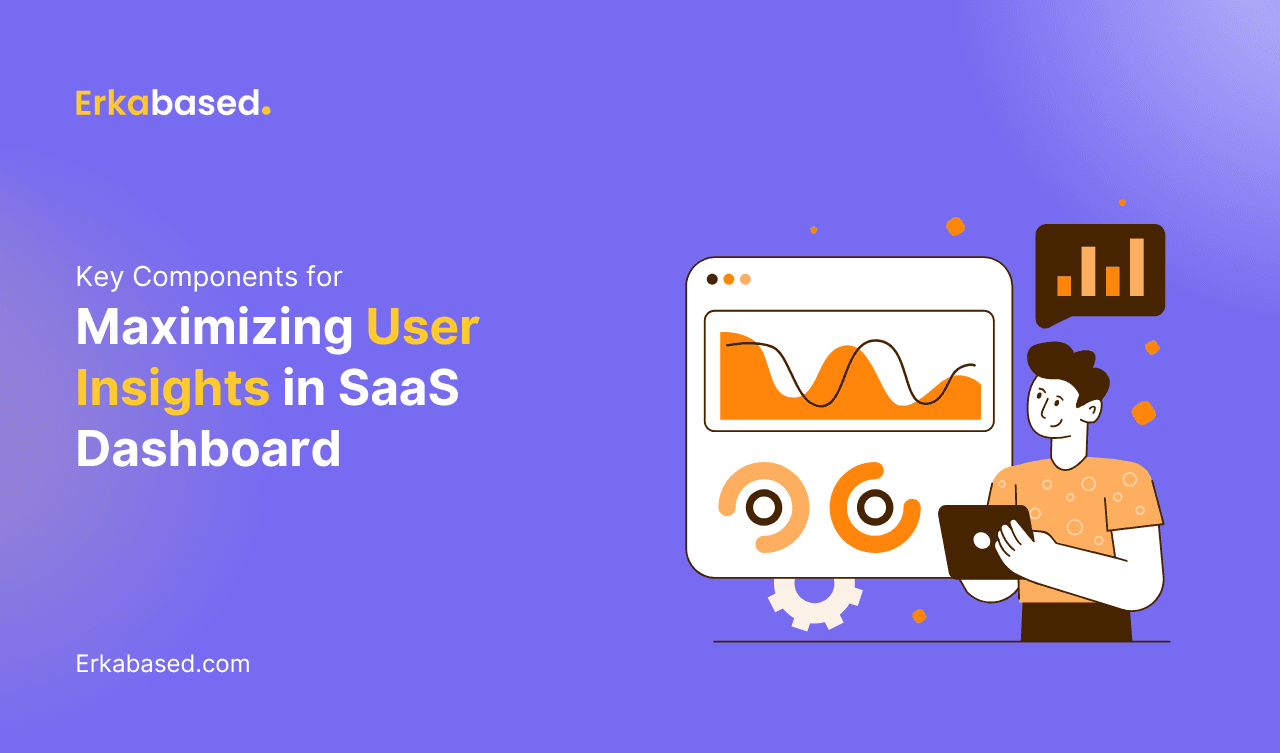Introduction
In the rapidly evolving world of Software-as-a-Service (SaaS), businesses must keep a close eye on key performance indicators (KPIs) to remain competitive and ensure sustainable growth. SaaS metrics are the foundation of understanding how well your business is performing, helping you make informed decisions that can drive customer acquisition, retention, and profitability. Without these metrics, it becomes difficult to gauge success or identify areas for improvement.
This guide will walk you through the most critical SaaS metrics, explain why they matter, and how tracking them can positively impact your business. Whether you’re a startup aiming to gain traction or an established SaaS provider looking to scale, understanding and utilizing these metrics will empower you to optimize your business operations and improve overall performance.
Why SaaS Metrics Matter
SaaS businesses operate under a unique model, where revenue is typically generated through subscriptions, and customer relationships are built over time. Unlike traditional software sales, where companies receive a large one-time payment, SaaS businesses rely on recurring revenue. This ongoing relationship means that companies need to consistently deliver value to retain customers and grow.
SaaS metrics are crucial because they provide deep insights into customer behavior, operational efficiency, and financial health. These metrics help you understand how well you’re acquiring customers, retaining them, and generating revenue—all of which are critical to your long-term success.
Key SaaS Metrics You Should Track
Below are the most important SaaS metrics that every business should monitor. By consistently tracking and analyzing these KPIs, you can make data-driven decisions that contribute to your company’s growth and profitability.
Monthly Recurring Revenue (MRR)
Monthly Recurring Revenue (MRR) is one of the most fundamental metrics for any SaaS business. It represents the total predictable revenue that your company generates from subscriptions in a given month. MRR is critical because it helps you gauge the health of your business and predict future revenue streams.
Why MRR Matters:
- Provides a clear picture of your company’s revenue consistency.
- Helps you track growth over time by monitoring how MRR increases or decreases.
- Simplifies financial forecasting, allowing for more accurate budgeting and resource allocation.
MRR is calculated by multiplying the number of active paying customers by the average revenue per user (ARPU) for the month.
MRR = Number of customers × ARPU
For example, if you have 100 customers, each paying $50 per month, your MRR would be $5,000.
Customer Acquisition Cost (CAC)
Customer Acquisition Cost (CAC) measures the total cost of acquiring a new customer, including expenses on marketing, sales, and other related activities. Knowing your CAC is vital because it tells you whether your customer acquisition efforts are cost-effective and sustainable over time.
Why CAC Matters:
- Allows you to evaluate the efficiency of your marketing and sales strategies.
- Helps determine the long-term profitability of each customer.
- Informs decisions about how much you should invest in customer acquisition without overspending.
To calculate CAC, divide the total amount spent on acquiring customers by the number of new customers gained during a specific period.
CAC = Total acquisition cost ÷ Number of new customers
If you spend $10,000 on sales and marketing in a month and acquire 50 new customers, your CAC is $200.
Customer Lifetime Value (CLTV)
Customer Lifetime Value (CLTV) is a crucial metric that estimates the total revenue you can expect from a single customer over the course of their relationship with your business. It helps you understand the long-term value of each customer and whether your customer acquisition strategy is yielding profitable returns.
Why CLTV Matters:
- Helps you understand the long-term profitability of each customer.
- Guides decision-making about how much you can afford to spend on customer acquisition.
- Informs retention strategies by emphasizing the importance of keeping high-value customers.
To calculate CLTV, multiply the average revenue per user (ARPU) by the customer’s expected lifespan in months or years.
CLTV = ARPU × Customer lifespan
If your ARPU is $100 per month, and the average customer stays with your company for 24 months, your CLTV would be $2,400.
Churn Rate
The Churn Rate represents the percentage of customers who cancel their subscriptions within a given period. For SaaS companies, a high churn rate can severely impact revenue and growth, making it essential to keep churn as low as possible. There are two types of churn to consider: customer churn (the number of customers lost) and revenue churn (the amount of revenue lost).
Why Churn Rate Matters:
- A high churn rate can signal problems with customer satisfaction, product fit, or pricing.
- Helps you assess the effectiveness of your customer retention efforts.
- Impacts long-term growth; reducing churn is critical for sustainable success.
To calculate customer churn, divide the number of customers lost during a specific period by the total number of customers at the beginning of that period.
Churn Rate = (Customers lost ÷ Total customers at the start) × 100
For instance, if you start the month with 200 customers and lose 10, your churn rate is 5%.
Net Revenue Retention (NRR)
Net Revenue Retention (NRR) measures the percentage of recurring revenue retained from existing customers over a set period, accounting for expansions, upgrades, downgrades, and cancellations. NRR gives you a clearer picture of how much revenue you're keeping, even when factoring in churn.
Why NRR Matters:
- Shows how well you're retaining and expanding revenue from your current customer base.
- Indicates overall customer satisfaction and the effectiveness of upselling strategies.
- A high NRR signals that your business can sustain growth even with minor churn.
NRR is calculated by dividing your total revenue at the end of the period (after accounting for upgrades, downgrades, and churn) by your total revenue at the beginning of the period, then multiplying by 100.
NRR = (Revenue at the end of the period ÷ Revenue at the beginning) × 100
For example, if you started with $100,000 in MRR and ended with $110,000, your NRR would be 110%.
Gross Margin
Gross Margin is the percentage of revenue remaining after subtracting the direct costs of delivering your service (such as hosting, software licenses, and customer support). For SaaS businesses, maintaining a healthy gross margin is key to ensuring profitability as it reflects your ability to efficiently manage operating costs.
Why Gross Margin Matters:
- Helps you evaluate the profitability of your product and operational efficiency.
- Directly impacts your ability to reinvest in growth and scale your business.
- Guides pricing strategy, ensuring that you cover costs and generate a profit.
Gross margin is calculated by subtracting the cost of goods sold (COGS) from total revenue, then dividing by total revenue.
Gross Margin = (Revenue - COGS) ÷ Revenue × 100
For example, if your SaaS business generates $50,000 in revenue and has $10,000 in direct costs, your gross margin would be 80%.
Active Users (DAU/MAU)
Daily Active Users (DAU) and Monthly Active Users (MAU) are essential metrics for tracking user engagement and product adoption. They tell you how many unique users interact with your product within a specific time frame, offering insights into how well your product is resonating with its audience.
Why DAU/MAU Matter:
- Helps you measure product stickiness and user engagement.
- Offers insight into customer behavior and how often your product is being used.
- Informs retention strategies and highlights opportunities for improving user engagement.
Tracking both DAU and MAU helps identify trends in user behavior and whether your product is being adopted as expected.
Optimizing SaaS Metrics for Sustainable Growth
Once you understand and regularly monitor these key SaaS metrics, the next step is to optimize them to drive long-term success. Here are some strategies to consider:
Lower Your CAC
Reducing customer acquisition costs while maintaining a healthy pipeline of new customers is critical. Invest in data-driven marketing strategies that target high-converting channels and refine your sales funnel to convert leads more efficiently.
Boost CLTV
Focus on increasing customer lifetime value by offering upsells, cross-sells, and higher-tier plans. Additionally, enhancing customer support and ensuring a seamless user experience can help retain customers for longer, thus improving CLTV.
Reduce Churn
A proactive approach to reducing churn includes offering personalized onboarding, regular check-ins with customers, and implementing feedback loops. Identify pain points and resolve them quickly to keep your users engaged and satisfied.
Drive User Engagement
Use in-app notifications, personalized content, and product updates to encourage users to engage with your software. High DAU/MAU ratios indicate that your product is valuable and consistently used by customers.
Conclusion
Tracking and optimizing SaaS metrics is essential for ensuring your business’s long-term success. From understanding how to reduce churn and improve MRR to identifying strategies for lowering CAC and increasing CLTV, data-driven insights are key to sustainable growth.
At Erkabased, we specialize in providing tailored solutions for SaaS businesses looking to optimize their software performance, scalability, and user engagement. Whether you need help building a robust analytics system, scaling your SaaS product, or refining your growth strategies, our team is here to support you. Contact Erkabased today to explore how we can help you maximize your SaaS potential and drive long-term success.



